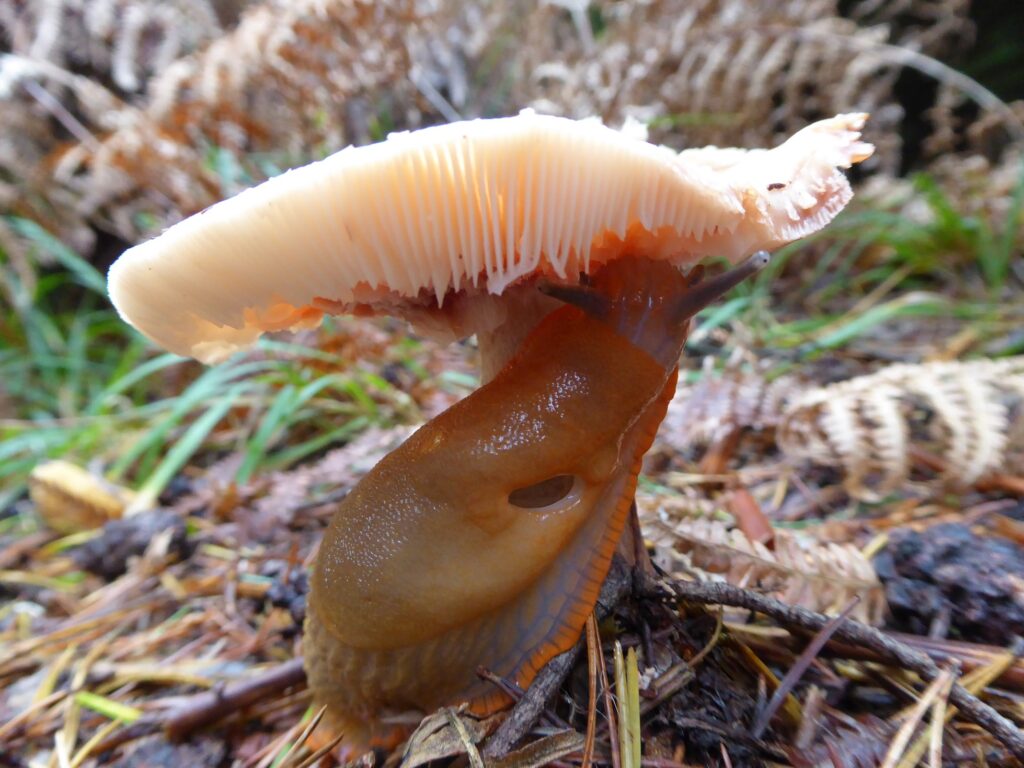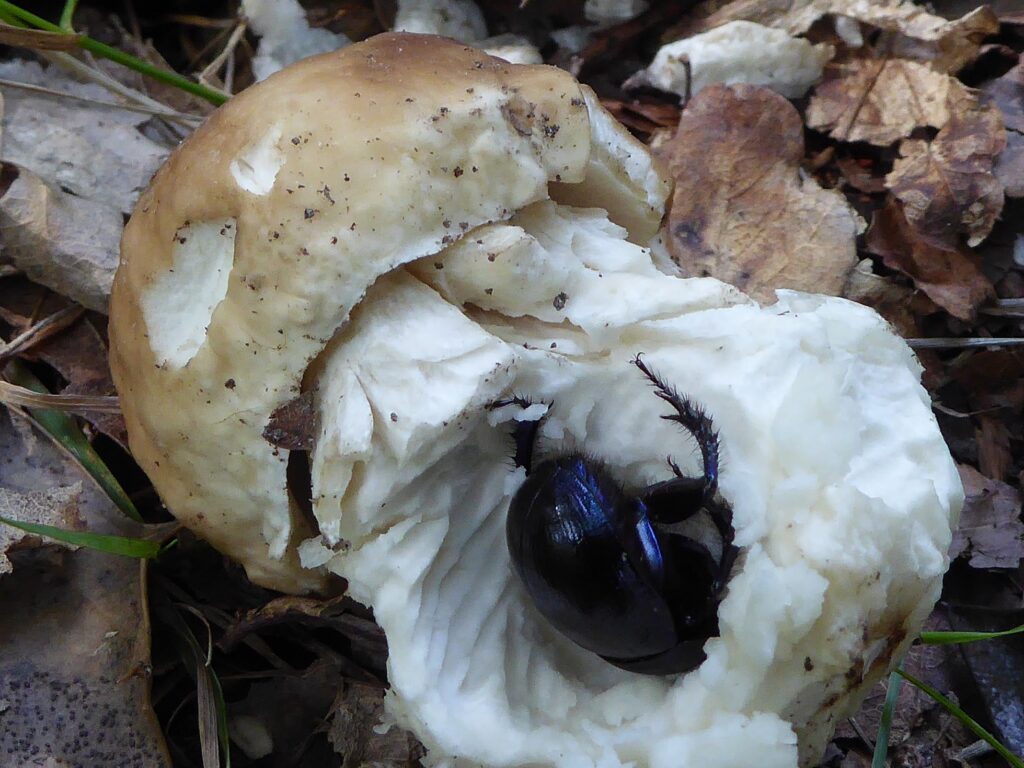
I love the comforting seasonal rhythms of the New Forest. The annual pony drifts are in full gallop and pannage pigs are busy snuffling out this year’s crop of fallen acorns amongst an autumn carpet of tumbling leaves. But it is the excitement of mushrooms appearing, almost magically, to reveal their otherwise hidden existence that I love the best. At this time of year I become a ‘mushroom hunter’, savouring the wonderful variety of colours, shapes and textures. In the protected habitat of the New Forest, I always follow the advice and don’t gather fungi to eat. Besides, I like leaving the fungi to the weird and wonderful creatures who seek out this autumn bounty. Look closely at the fruiting body of a fungus and you’ll see an amazing variety of fungus-eating invertebrates.
Most visible are slugs, tucking into the soft flesh or spores of fungi, often completely consuming them – just leaving a tell-tale trail of crumbs and slime! Slugs are mainly nocturnal, but you might find a sheltering slug under a fungi cap or during damp, overcast weather. Look out for the Ash-black Slug, the UK’s largest slug which can grow up to 20cm long! – it feeds primarily on fungi and is found only in ancient woodlands.
Another easy recognisable visitor is the large bluish-black metallic Dor Beetle. Feeding primary on rotting fungi, a single Dor Beetle can hollow out an entire fungus as this photo shows. They are fascinating to watch, and often where there’s one there’ll be more – listen as they trundle noisily over dry fallen leaves.

Other fungi loving invertebrates are smaller and are attracted to mushrooms, either to eat the flesh or spores, or to lay their eggs. There are varieties of Carrion Beetle which have a good sense of smell and feed on rotting fungi, while the larvae of the Fungus Gnat happily tunnel and consume the fungus safely hidden inside. Sometimes it’s difficult not to find a mushroom full of maggots! As well as generalist feeders, there are adult or juvenile stages of various flies, mites, gnats, beetles, springtail and nematodes that may have evolved specific life cycle associations with fungal fruiting bodies, spores or mycelia.
It’s these often unseen, complex web of connections that makes studying fungi so interesting for me. For example, the Stinkhorn fungus relies on carrion loving insects for spore-dispersal. Its foul-smelling slimy, greenish spores attract Greenbottle, Bluebottle and Flesh-flies. As they eat the slime they pick up spores which are then scattered when they fly away. Just follow your nose to find this fungus, it smells like rotting meat!
So next time you’re out on a wander, take a mirror to peep underneath a mushroom, or gently shake it (gills down) over a sheet of white paper to reveal which invertebrates have been hiding there. Take a moment to appreciate how truly fabulous fungi are, and how they fit into the complex web of life.
Check out this link to Fungi in the New Forest National Park
